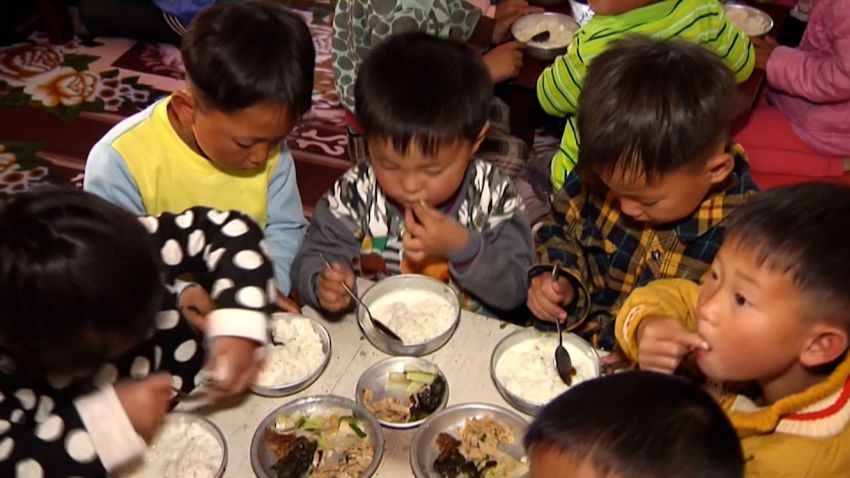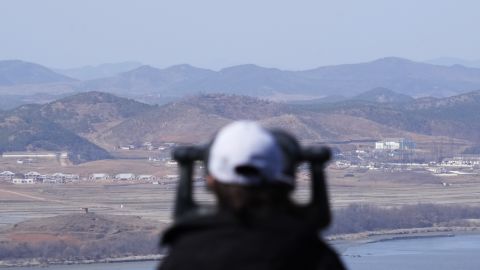
North Korea’s Food Shortage Is about to Take a Deadly Turn for the Worse, Experts Say
Concerns about North Korea’s chronic food shortages are growing, with multiple sources suggesting this week that deaths due to starvation are likely.
Analysis by Paula Hancocks
Some experts say the country has hit its worst point since a 1990s famine known as the “Arduous March” caused mass starvation and killed hundreds of thousands of people, or an estimated 3-5% of what was then a 20 million-strong population.
Trade data, satellite images and assessments by the United Nations and South Korean authorities all suggest the food supply has now “dipped below the amount needed to satisfy minimum human needs,” according to Lucas Rengifo-Keller, a research analyst at the Peterson Institute for International Economics.
Nigerians React To Video Of Ronaldo And His Kids Vibing To Rema’s Song (Video)
Even if food was distributed equally – something close to inconceivable in North Korea where the elite and military take priority – Rengifo-Keller said “you would have hunger-related deaths.”
South Korean officials agree with that assessment, with Seoul announcing recently that it believes deaths from starvation are occurring in some areas of the country. Though producing solid evidence to back up those claims is made difficult by the country’s isolation, few experts doubt its assessment.
Even before the Covid pandemic, nearly half of the North Korean population was undernourished, according to the UN Food and Agriculture Organization.
Three years of closed borders and isolation can only have made matters worse.
In a sign of just how desperate the situation has become, North Korean leader Kim Jong Un held a four-day Workers’ Party meeting this week to discuss a revamp of the country’s agricultural sector, calling for a “fundamental transformation” in farming and state economic plans and a need to strengthen state control of farming.
North Korean trucks loaded with sacks of maize wait for clearance at the Chinese border in 1997, during the famine period known as the “Arduous March.”
Anu Nousiainen
But various experts say Pyongyang has only itself to blame for the problems. During the pandemic, Pyongyang ramped up its isolationist tendencies, erecting a second layer of fencing along 300 kilometers of its border with China and squeezing what little cross border trade it had access to.
And in the past year it has spent precious resources carrying out a record number of missile tests.
“There’s been shoot on sight orders (at the border) that were put in place in August 2020 … a blockade on travel and trade, which has included what very limited official trade (there was before),” said Lina Yoon, a senior researcher at Human Rights Watch.
During 2022, China officially exported nearly 56 million kilograms of wheat or maslin flour and 53,280 kg of cereals in grain/flakes form to North Korea, according to Chinese customs data.
But Pyongyang’s clampdown has strangled off unofficial trade, which as Yoon points out is “one of the main lifelines of the markets inside North Korea where ordinary North Koreans buy products.”
Cases in which people smuggle Chinese products into the country, with a bribe to a border guard to look the other way, have been next to non-existent since the borders closed.
Various experts say the root problem is years of economic mismanagement and that Kim’s efforts to ramp up state control further will only make things worse.
“The North Korean borders need to open and they need to restart trade and they need to bring these things in for agriculture to improve and they need food to feed the people. But right now they are prioritizing isolation, they are prioritizing repression,” Yoon said.
But as Rengifo-Keller pointed out, it is not in Kim’s interest to allow the unofficial trade of the past to re-emerge in this dynastically ruled country. “The regime does not want a flourishing entrepreneurial class that can threaten its power.”
Then there are the missile tests Kim remains obsessed with and his constant refusals of offers of aid from his neighbor.
South Korea’s Foreign Minister Park Jin told CNN in an interview last week that “the only way that North Korea can get out of this trouble is to come back to the dialogue table and accept our humanitarian offer to the North and make a better choice for the future.”
Prime Minister Han Duck-soo told CNN Thursday said the situation “is worsening, our intelligence shows, because it’s clear that their policies are changing… the chairman (Kim Jong Un) would like to put a lot of pressure to make it state dictated, you know, supply of food to their people, which will not function.”
Seoul’s Ministry of Unification was quick to point out Pyongyang continues to focus on its missile and nuclear program rather than feeding its own people.
A visitor looks over the border between South and North Korea from the Unification Observation Post in Paju, South Korea.
Ahn Young-joon/AP
In a briefing last month, vice spokesperson Lee Hyo-jung said, “according to local and international research institutions, if North Korea had used the expense of the missiles it launched last year on food supplies, it would have been enough to purchase over one million tons of food, believed to be more than enough to cover North Korea’s annual food shortage.”
Seoul’s rural development agency believes North Korea’s crop production last year was 4% lower than the year before, suffering flooding and adverse weather.
Rengifo-Keller fears the culmination of these effects coupled with the regime’s “misguided approach to economic policy” could have a disastrous impact on the already suffering population.
“This is a chronically malnourished population for decades, high rates of stunting and all signals point to a deteriorating situation, so it certainly wouldn’t take much to push the country into famine.”







